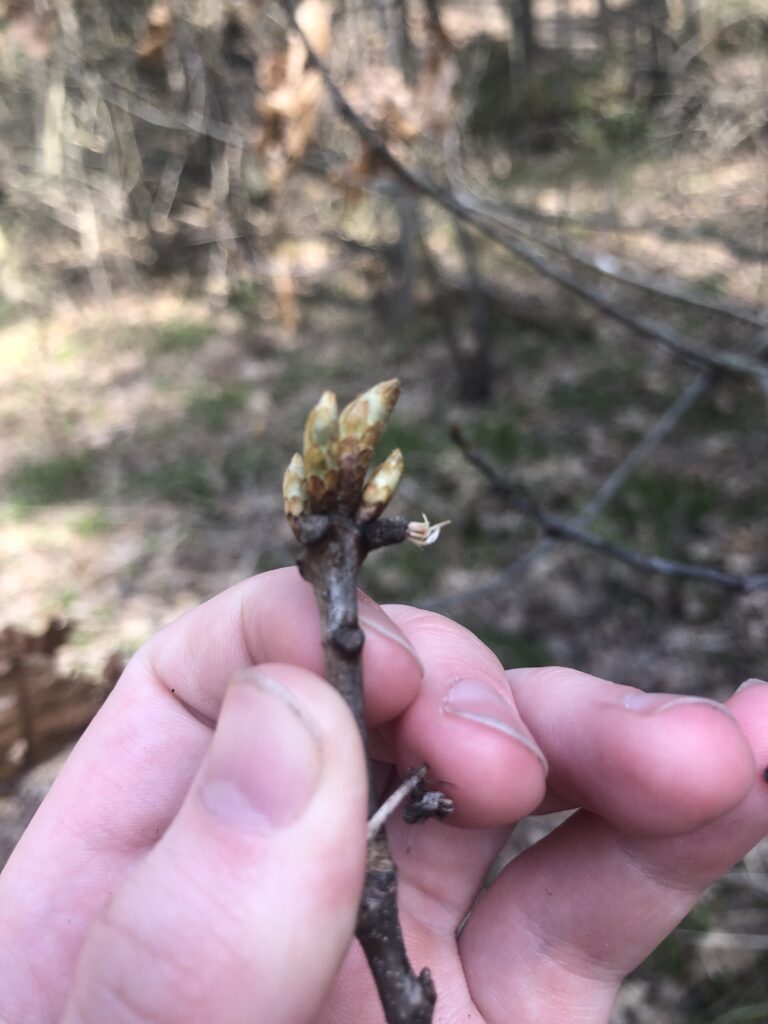The effects of the warm spring weather were apparent at my phenology spot. There were large buds and small leaves all over the woods. Understory grassed and plants were springing back to life. I encountered a group of people who were observing moss, and they showed me swarms of male bees of varying species.
Some landmarks I am familiar with are the human made bog-bridges, the muddy buddy sign, the soil pit on the way there, and centennial brook. Nature and culture intertwine here. Centennial woods hosts many organisms of the more than human world, and whenever I visit Centennial woods, there is a large human presence. I have seen many other naturalists and hikers enjoying the ecosystem. I consider myself a part of my place. I am connected to it from the shared watershed, home place, and experiences of the seasons. To be more connected to this place, I could spend more time there and identify more of the natural inhabitants.
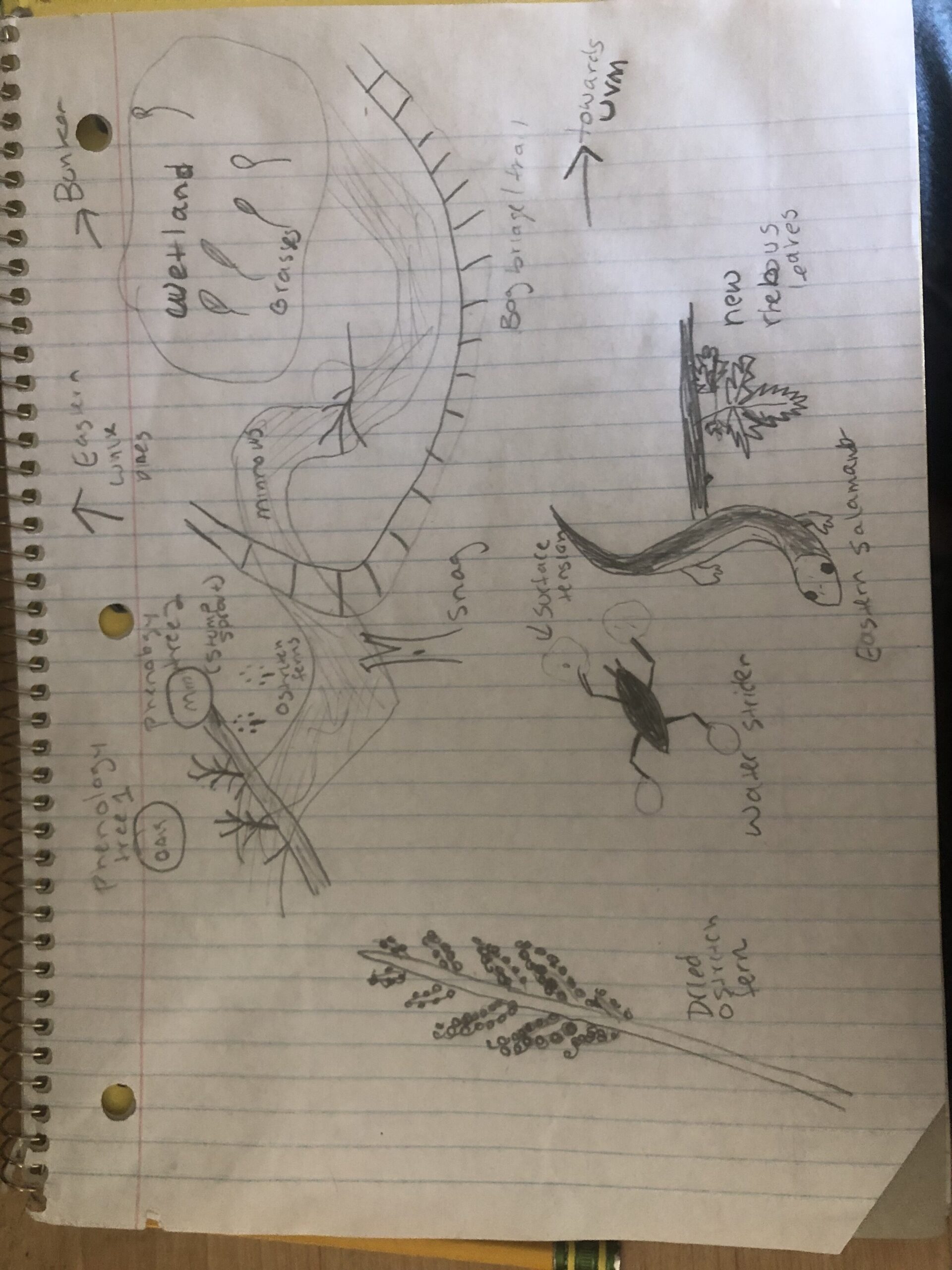
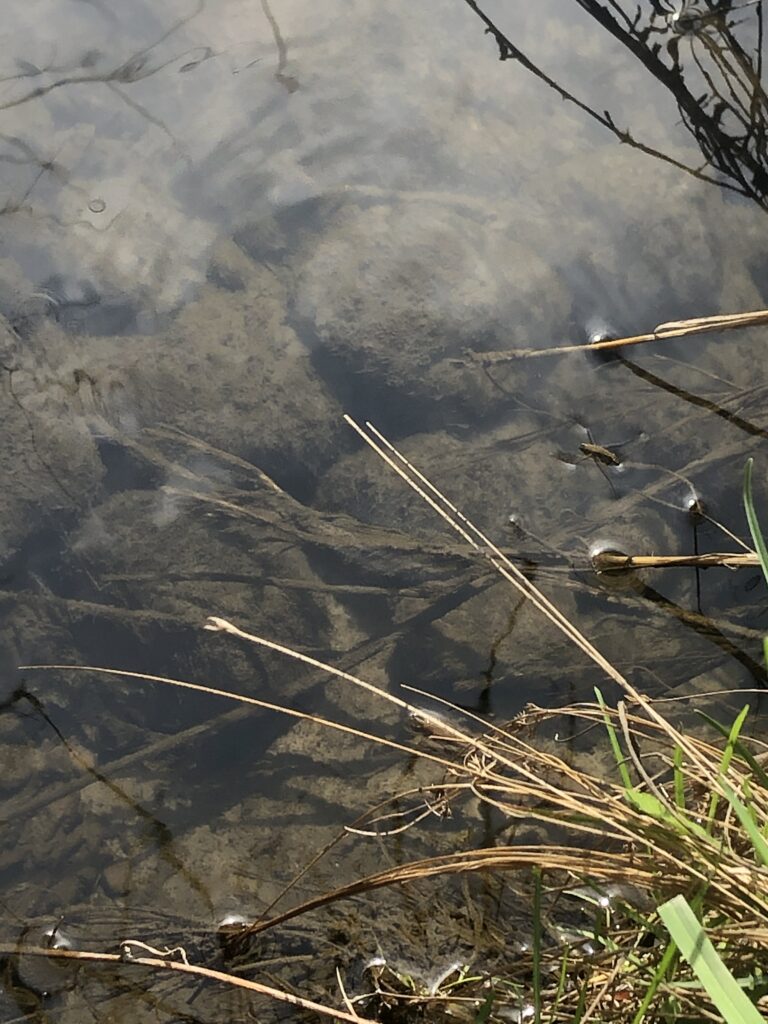
At the beginning of my observations, the beginning of fall was apparent. The trees then lost their leaves, and went dormant for the long winter until they started to awaken recently. Winter wind storms caused trees to fall across the trail and into the woods. The wooden bridge over the brook has started to slip into the water.
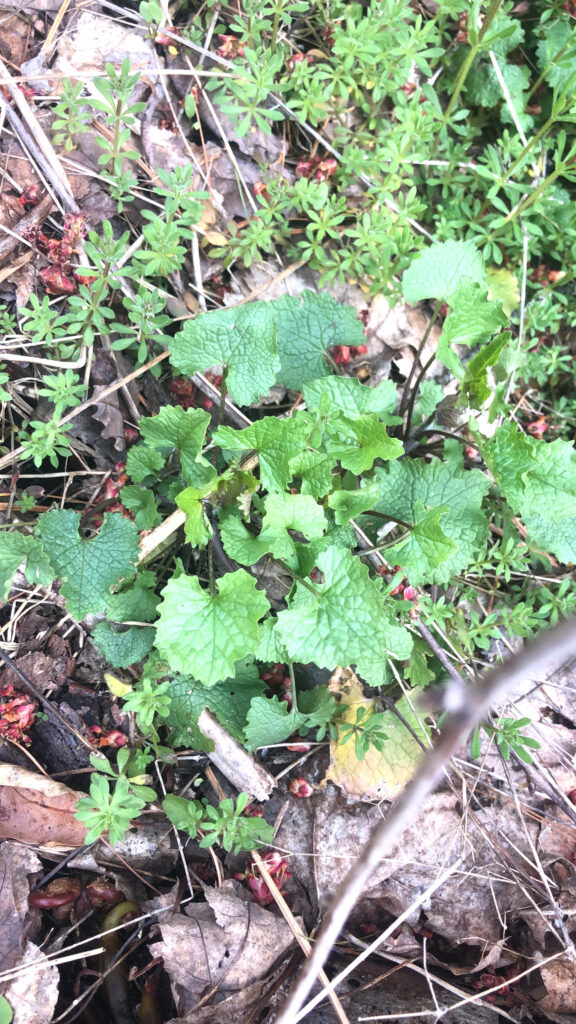
I also located 2 eastern red-backed salamanders under logs.
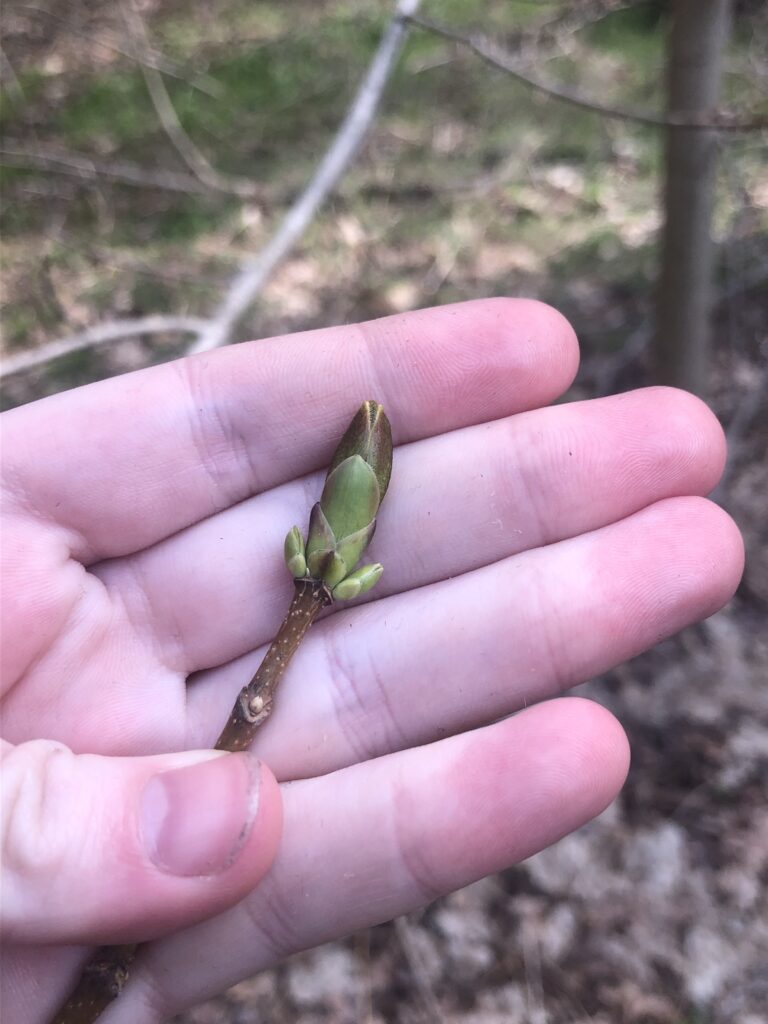
As it turns out, my phenology tree that I have documented the last two times was a separate tree than the Northern red oak that I initially viewed. I think the second phenology tree is a Norway maple. In the past week, it had some impressive growth due to the warm weather.
I believe I chose the wrong tree after I got disoriented after some trees had been removed. I located the original tree and took a picture of its buds now.
